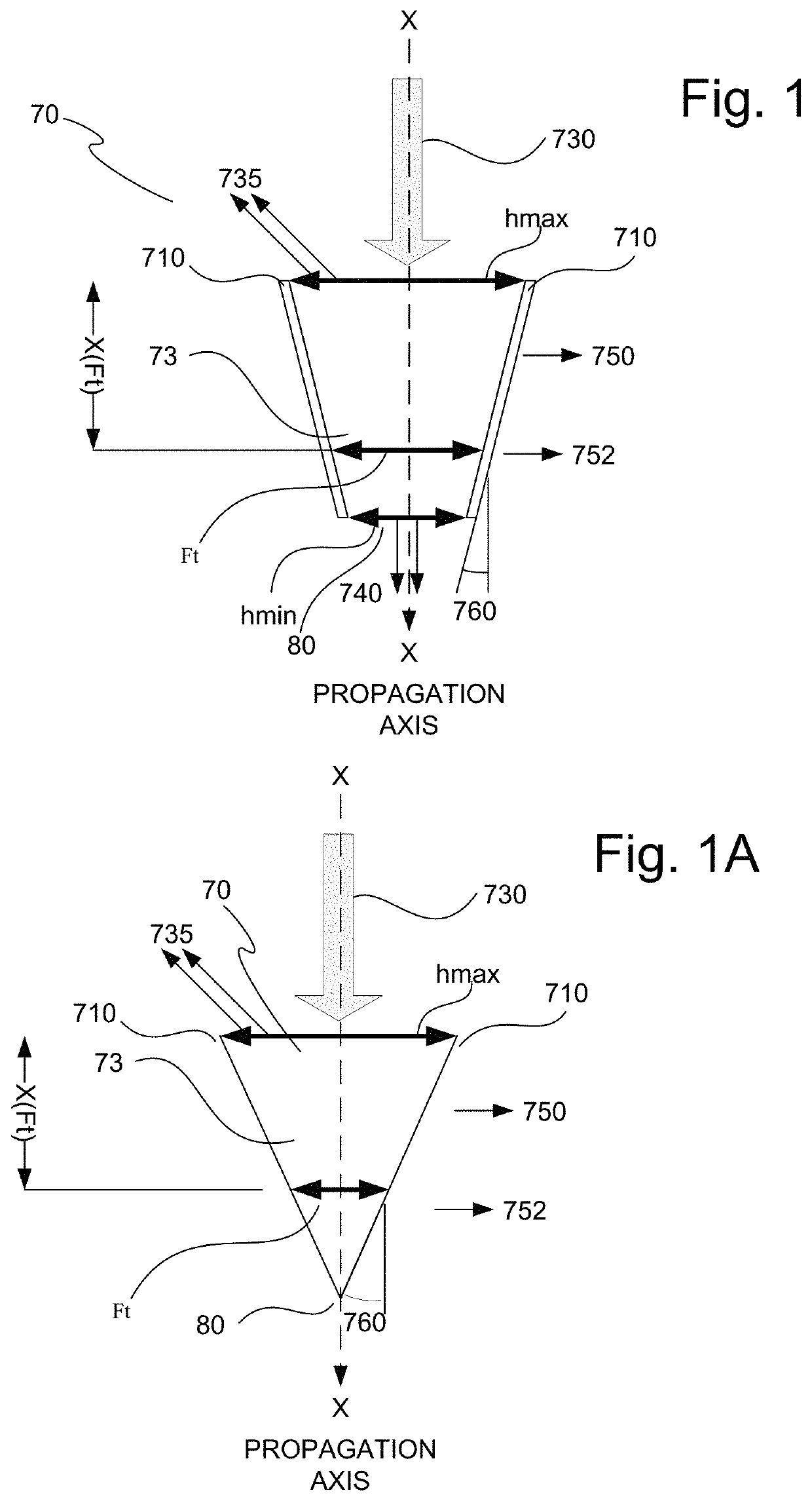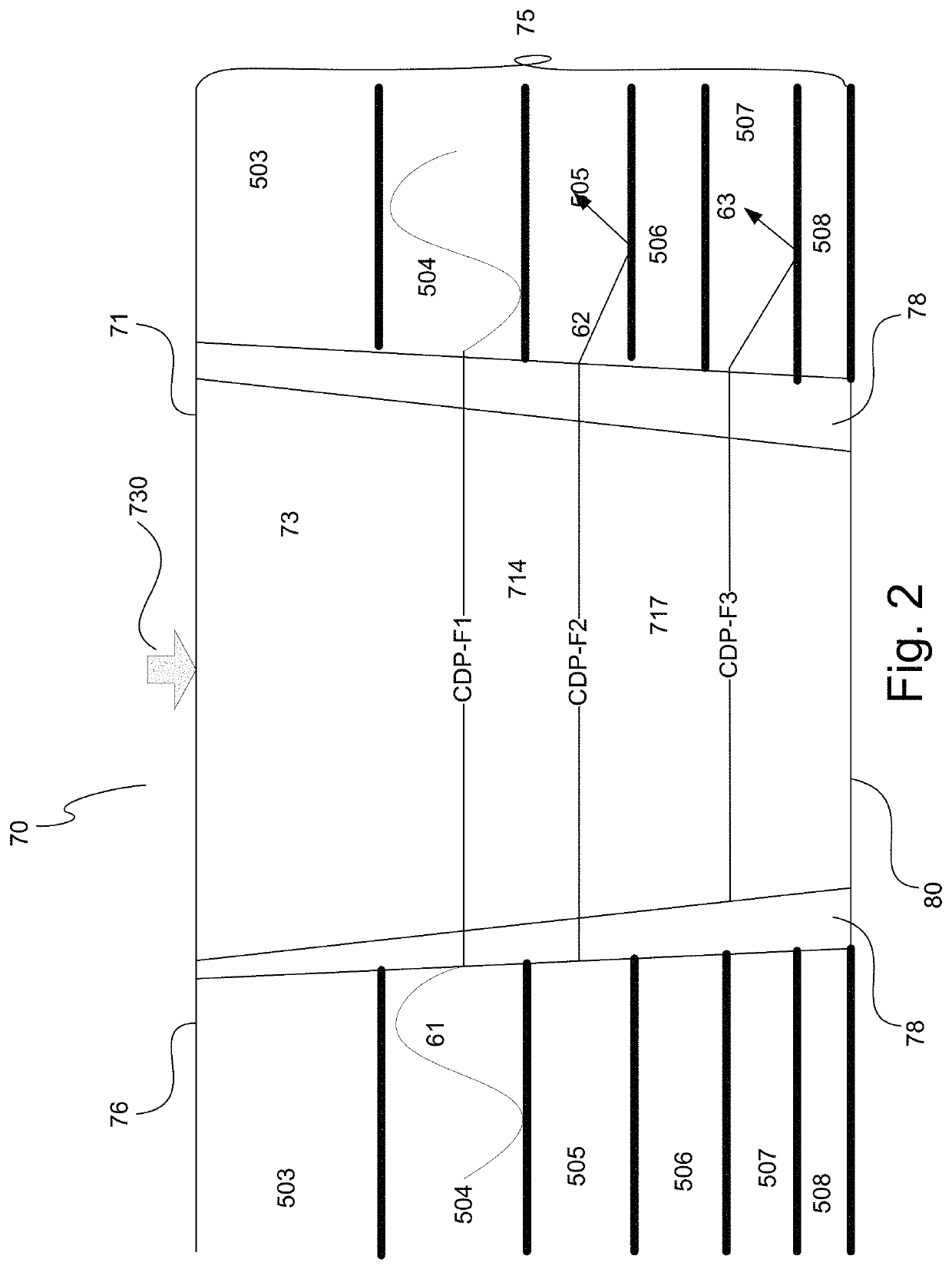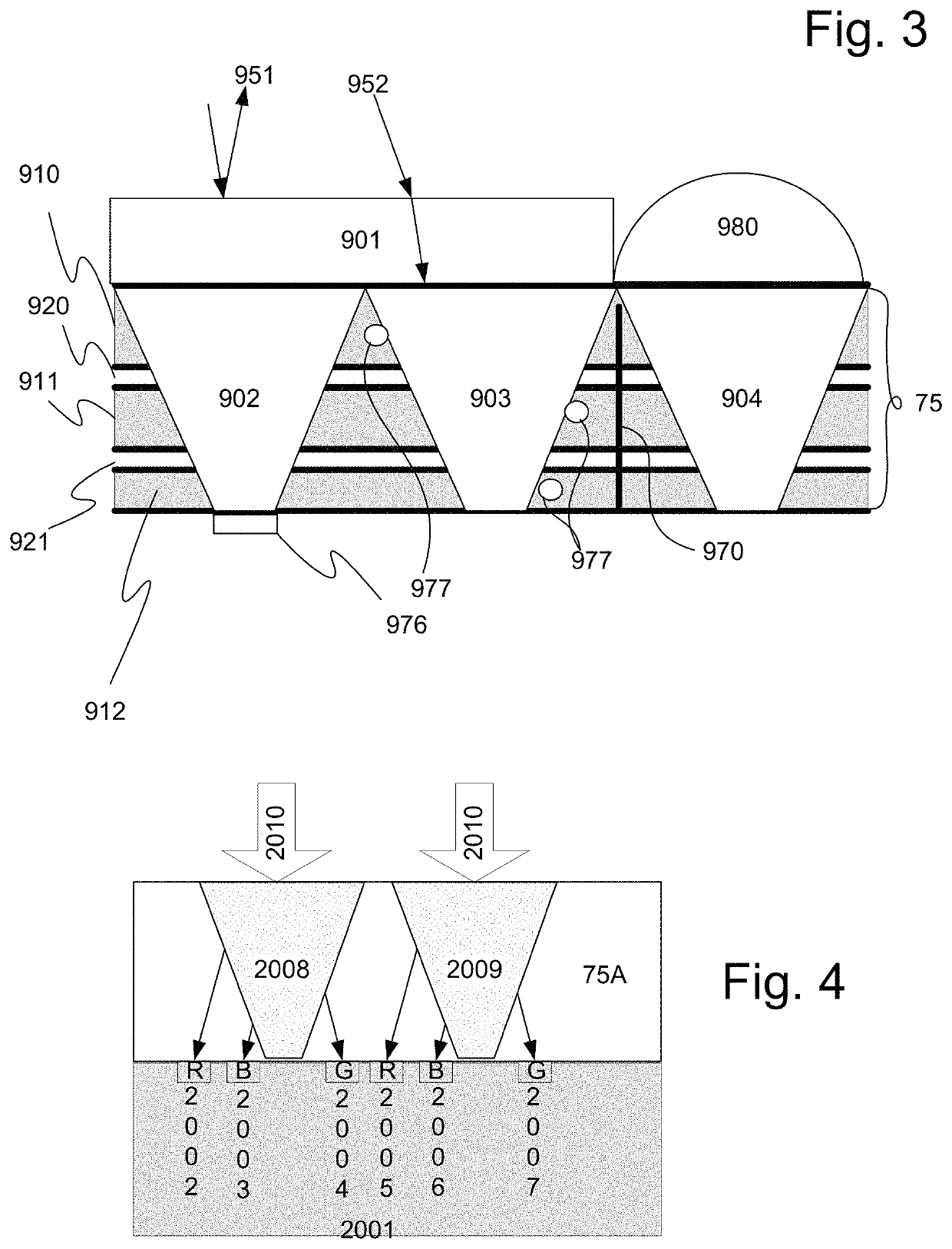Nano-scale conical traps based splitter, combiner, and reflector, and applications utilizing same
a conical trap and nano-scale technology, applied in the field of optical nanostructures, can solve the problems of inability to realize the effect of a single frequency, inability to manufacture bragg mirrors, and inability to detect normal incidence, etc., and achieve the effect of extending the ability to perform such operations
- Summary
- Abstract
- Description
- Claims
- Application Information
AI Technical Summary
Benefits of technology
Problems solved by technology
Method used
Image
Examples
Embodiment Construction
lass="d_n">[0085]Certain figures and embodiments of the invention will be described herein by way of example to increase the understanding of different aspects of the invention.
[0086]FIG. 1 depicts a cutout of a simplified conical trap (CT) 70 which is a cavity 73 having a tapered longitudinal cross section, and is dimensioned as described below. In splitter mode the CT allows a wave in the spectral range of interest to propagate in the cavity until it reaches a cone departure state CDP at a frequency dependent width, which corresponds to a frequency dependent depth due to the core taper. The cavity is dimensioned to allow the wave to propagate therein and to depart it via its peripheral side wall 710. The tapered cavity 73 has a wide end denoted in FIG. 1 as hmax defining an aperture, and a narrow end hmin referred to in theses specifications as a tip. The cavity is delimited by its side periphery walls 710 which in some embodiments are defined by the stratum in which the CT is emb...
PUM
| Property | Measurement | Unit |
|---|---|---|
| wavelengths | aaaaa | aaaaa |
| wavelength | aaaaa | aaaaa |
| multispectral radiant energy | aaaaa | aaaaa |
Abstract
Description
Claims
Application Information
 Login to View More
Login to View More - R&D
- Intellectual Property
- Life Sciences
- Materials
- Tech Scout
- Unparalleled Data Quality
- Higher Quality Content
- 60% Fewer Hallucinations
Browse by: Latest US Patents, China's latest patents, Technical Efficacy Thesaurus, Application Domain, Technology Topic, Popular Technical Reports.
© 2025 PatSnap. All rights reserved.Legal|Privacy policy|Modern Slavery Act Transparency Statement|Sitemap|About US| Contact US: help@patsnap.com



